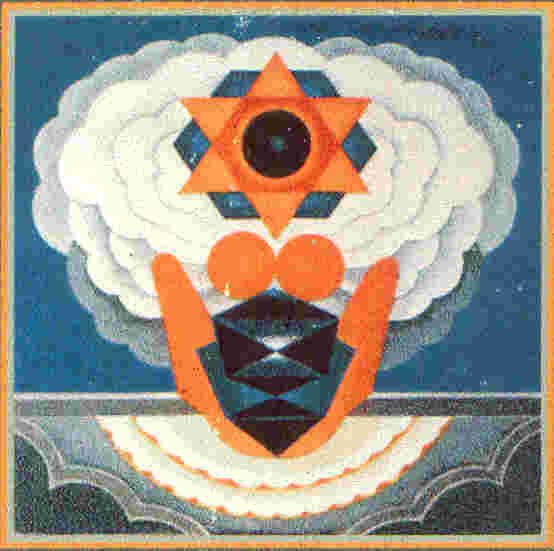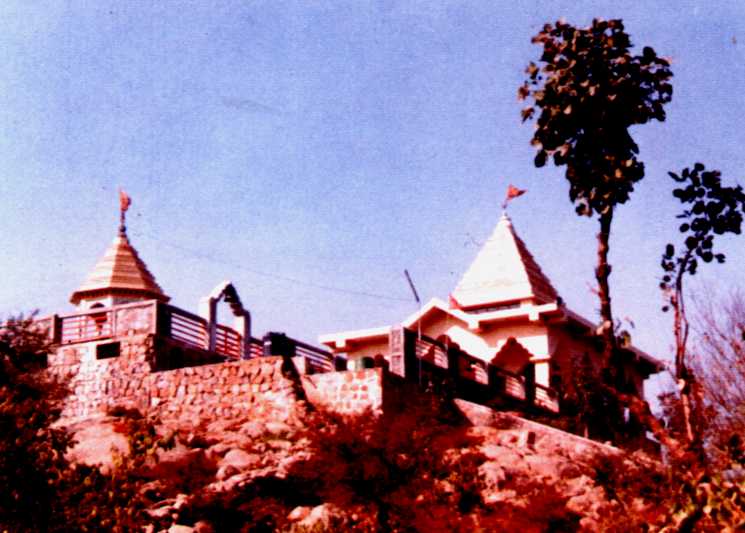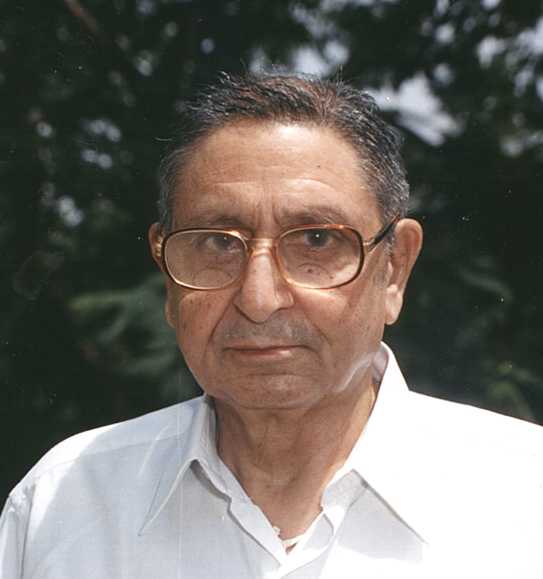|

|

|
|
Kashmiri Pandits' Association, Mumbai, India |

|
| | Home | April-May 2003 Issue | |
|
From
the Pages of History …
J.N. Kachroo
Kashmiri
Loses Her Independence
Babar
founded Mughal rule in India in 1526 AD. His mission was clear to him; he aimed
at building an In
1526, Kashmir was under the rule of Sultan Mohammad Shah (IV). Anarchy prevailed
in the kingdom due to the fighting among petty nobles and also rivalry among the
scions and their successors of Zain-ul-Abidin. Among the nobles, two prominent
persons Kazi Chak and Malik Abdal Magrey played an important role. In
1527, Babar sent a force under Kushak Beg and Ali Beg to help Sikander in
securing the throne by overthrowing the ruling prince. The Kashmiris saw through
the trick which was to bring Kashmir under the Mughal hegemony. As a result, the
otherwise rival feudal lords of the Valley rallied under the banner of Kazi Chak,
whose patriotism was stirred. He was at Naushera then, having been driven out of
the Valley by his powerful rival, Abdal Magrey. Kazi Chak collected a force
comprising the hill tribes and exiled Kashmiri soldiers, put his 18 year old son
at its head and conducted a successful operation against the mighty Mughals, who
had to withdraw ignominiously without entering the Valley. Kazi
Chak became a hero. He was appointed as Wazir. However, his rival Abdal Magrey
took shelter under Babar and induced him to make another attempt. Babar agreed
but used a different excuse. Kazi Chak, removing Muhammad Shah from the throne,
had put up his son Prince Ibrahim on the throne. Babar got Nazuk Shah, a scion
of Shah Mir declared as Sultan of Kashmir. Some nobles helped him and with the
help of the Mughal army, defeated the forces of Kazi Chak and enthroned Nazuk
Shah. Only after one year in 1530, Muhammad Shah was restored. Magrey quickly
sensed the resentment of the nobles against the presence of the Mughal soldiers
who were sent back from Kashmir. Thus Babar failed a second time in bringing
Kashmir under his sway. The
Mughals made a third attempt during Humayun's rule. A strong Mughal force of
3000 horse under Mehram Beg entered Srinagar without much resistance. But soon
the Kashmiri nobles patched up their differences again and invited Kazi Chak to
lead them to drive the invader out of their native land. The Mughals could not
stand the pressure mounted by the Kashmiris. They agreed to quit the Valley on
promise of a safe passage to the Punjab. Mirza
Haider Dughlat, an adventurer from Tashkent and a close relative of Babar tried
his luck in 1533 but met with the combined resistance of Kazi Chak and Abdal
Magrey. However, Mirza Dughlat helped by Abdal Magrey occupied Srinagar in 1540
AD and placed Nazuk Shah on the throne. Dughlat thus exercised influence on the
Sultan and increased the influence of the Mughals for eleven years till his
death. But the Sultans retained independence. Meanwhile,
the last Sultan ruler, Habib Shah was removed from the throne of Kashmir and
replaced by Ghazi Chak. The rule of Kashmir passed on to Chaks in 1561. During
early years of Akbar's rule, Shamas Raina, a local noble helped Abdul Mali, a
favourite of Humayun, to invade Kashmir, but was defeated by Ghazi Chak. Kashmir
continued to be independent. Hussain
Shah Chak ascended the throne of Kashmir in 1563 AD. Chaks were the followers of
Shia faith. Helped and instigated by the Imperial government at Agra, Shia-Suni
conflict took a violent turn. Akbar made a diplomatic move. He sent two envoys,
both of Shia faith to Kashmir to ask the Chak ruler Hussain to accept the Mughal
suzerainty. The Chak ruler refused and sent away the envoys with presents for
the King. Akbar made another diplomatic attempt in 1578 AD, but not much was
achieved. In
1579, Yusuf Shah Chak ascended the throne. A lover of music, Yusuf married a
simple but romantic girl Zooni, later known as Habba Khatoon. She
was a singer and a poetess. People lost their confidence in their king.
His wise minister Mohammad Bahaqi took over the charge of the ruler and forced
Yusuf Shah to flee to seek Akbar's help. Finding it a great opportunity, Akbar
sent Mughal soldiers under Raja Man Singh. But Yusuf Chak realised his
shortsighted act and persuaded Man Singh not to proceed to Srinagar, but himself
went at the head of a small army of 4000 from hill tribes. He succeeded in
capturing the throne once again. Akbar
made more than one attempt to bring Yusuf Shah to attend his court but all in
vain. Thus
Kashmir maintained her freedom and the mighty Mughals failed to win Kashmir
either militarily of diplomatically, right from 1526 to 1586 AD.
Throughout the period, the Kashmiris gave
proof of their patriotism and exhibited a wonderful ability of facing the
enemy unitedly, inspite of mutual differences. The
determined Akbar, the great Mughal Emperor now decided to make the final bid to
annexe Kashmir by means fair or foul. On
December 20, 1585, a strong force of 500 horse under the command of Raja Bhagwan
Das marched into Kashmir via Jhelum
valley route. Yusuf Shah felt nervous and thought it futile to offer any
resistance. But his youthful and dashing son, Yaqub put up a stiff resistance.
Bhagwan Das's benumbed force could make no progress and entered into negotiation
with Yusuf Shah. It was agreed that 1) The Mughals would withdraw, 2) Yusuf Shah
would retain the throne, 3) Coins would be struck and Khutba read in the name of
the emperor, 4) Yusuf Shah was persuaded to travel to Attock to receive regards
from the emperor and where the treaty would be ratified. Though advised by his
son not to go, Yusuf Shah travelled only to be imprisoned there. Bhagwan Das
thought it as a betrayal and even attempted suicide. When Akbar reached Lahore,
he handed over Yusuf Shah to Raja Tudarmal. After two and a half years, he was
given a Mansab of 500 horse, sent to Bihar and not allowed to go back. In
1592, he died there and was buried in Patna.
Back home, Yaqub Shah continued to rule as the
Sultan of Kashmir, disregarding the terms of agreement and striking coins in his
name. But soon, he, because of a ruthless policy of terror, lost the confidence
of his people. Sheikh Yaqub Sarfi,
a poet, a respected Suni, secured the support of a large number of Kashmiri
nobles, and invited Akbar to come to Kashmir to put an end to the prevailing
lawlessness.
Assured of local help and support, the Triumphant Mughals entered Srinagar on 14
October 1586.
Thus
Kashmir lost its independence to become a province of the Mughal Empire.
Yaqub Shah made futile attempts to regain his throne. It took three years
for the Mughal Subedhars to restore complete order. On 14th October 1589, Akbar,
the great Mughal entered Srinagar to a rousing reception by all sections of the
people who were sick of the lawlessness and intrigues of the nobles.
|
|
|
JOIN US |
|
|


 empire. Kashmir, occupying an important strategic position, could
not escape his notice. The beauty of the Valley with its bracing climate had an
additional attraction
empire. Kashmir, occupying an important strategic position, could
not escape his notice. The beauty of the Valley with its bracing climate had an
additional attraction

